Cucumbers (Cucumis sativus) are warm-season, fast-growing vegetables with shallow roots which originated from India. Some sources claim that Christopher Columbus brought this veggie to the Americas.
Those plants can be monoecious, which means that they produce both male and female flowers. Most of the cucumbers are in this group, and they need insects to pollinate them. On the other hand, hybrid cucumbers are gynoecious. That means that they produce only female flowers, and you should pollinate them by hand or set them near monoecious plants for pollination.
Varieties of Cucumbers
Slicing cucumbers
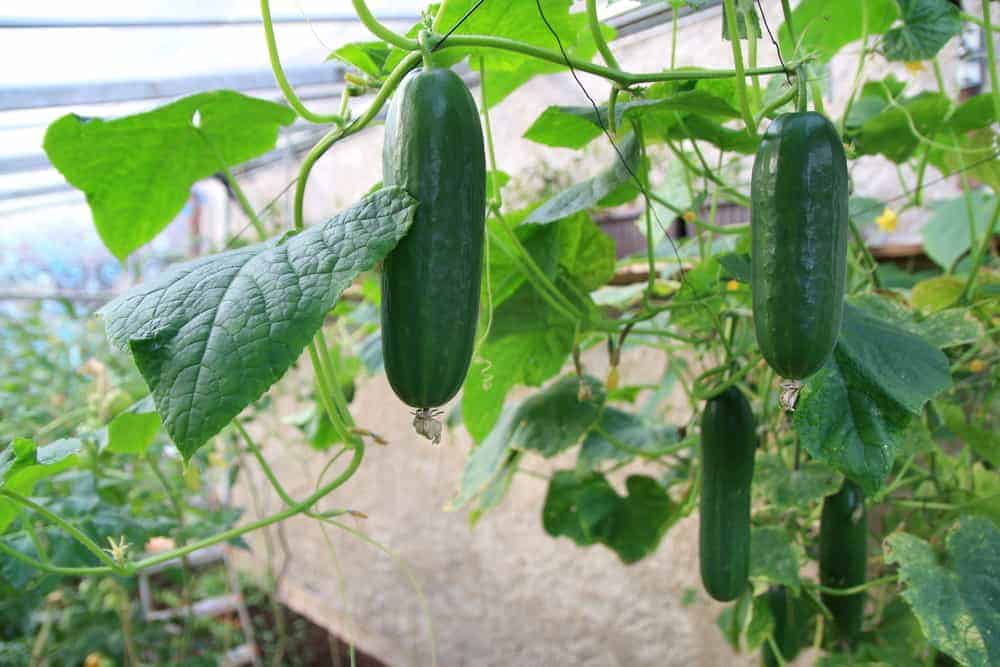
Chose to plant those green-skinned veggies to eat them fresh when they are 6 or 8 inches (15 – 20 cm) long. You can pick out mild-flavored Burpless cultivars, seedless English variety, or those from a greenhouse. There are also yellow lemon cucumbers and ribbed cultivars from Asia.
Pickling cucumbers
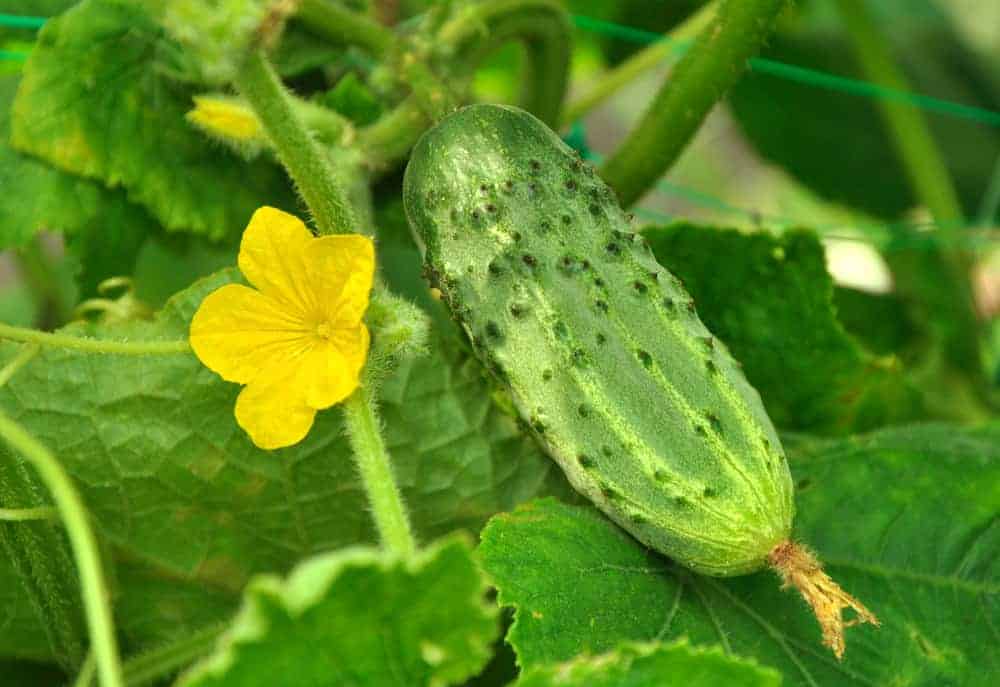
Those cucumbers have a thin, pale-green skin, and you will grow them for pickling. Do it within a few hours after harvesting 3 to 4 inches (7.6 to 10 cm) long fruits, and consume them throughout winter.
Bush cucumbers
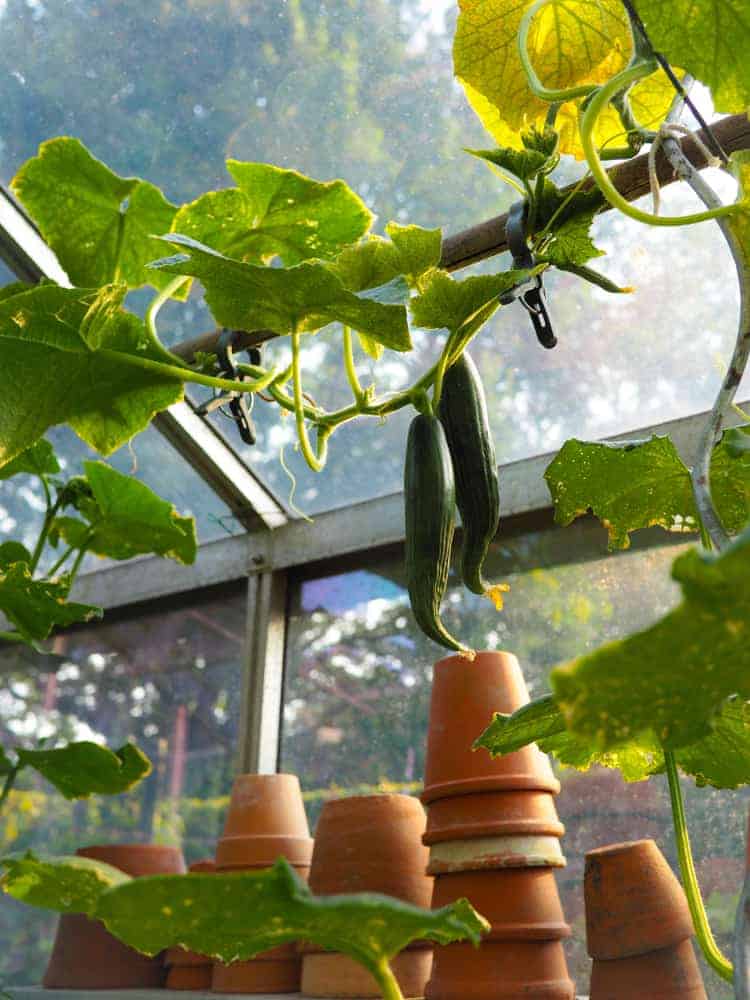
They can grow 24 to 36 inches (61 – 91.5 cm) high and form a compact plant. If you have a small garden or prefer growing vegetables in a container, they are the right choice for you. Plant those veggies every two weeks to secure a continuous harvest.
Vine cucumbers
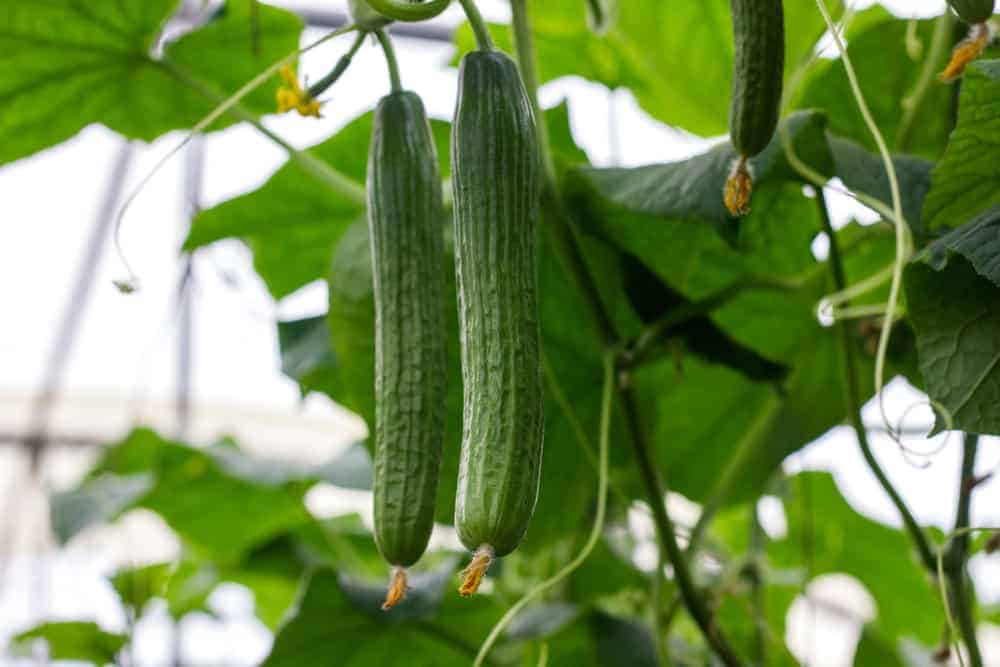
They are 6 feet (1.8 m) high and approximately 2 to 3 feet (61 – 91.5 cm) wide plants which require a lot of space. However, you can expect them to produce more fruits. Don’t forget to provide a fence, tripods, or trellis to keep fruits safe, away from the ground.
How to Plant Cucumbers in Your Garden
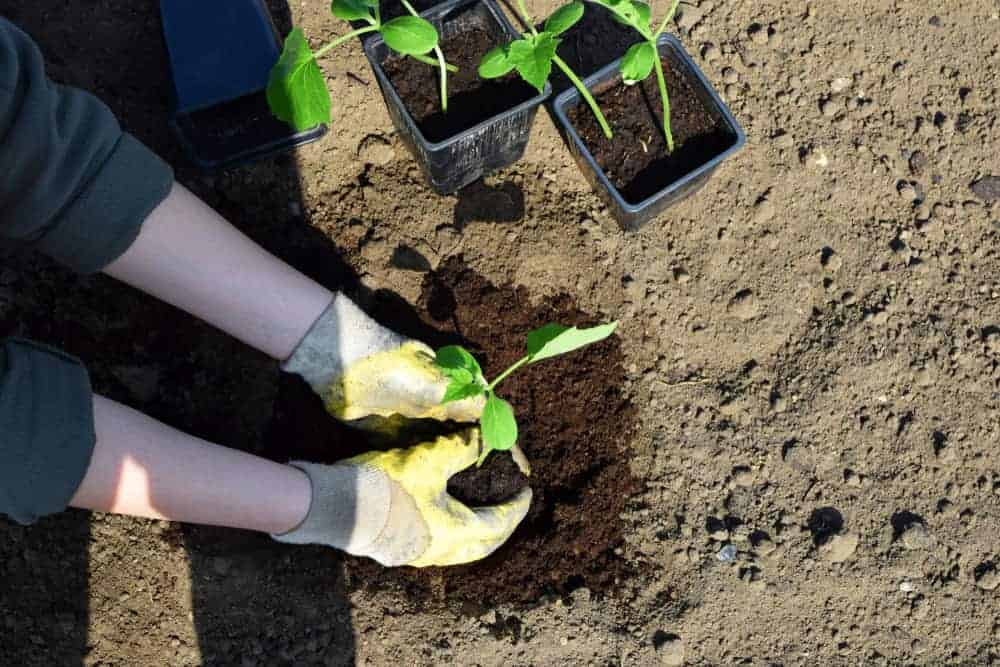
Cucumbers grow well in most regions of the US, especially in the southern States. In general, you need approximately two to three cucumber plants per member of your household.
Sow seeds indoors in mid-spring, approximately three weeks before you plan to transplant seedlings in your garden. It is excellent doing that about two weeks after the last frost since they are susceptible to coldness. To start germinating, those veggies require the temperatures of the soil of at least 70 F (21 C).
Before transplanting your vegetable, you should prepare the soil. Remove rocks and debris and apply enough manure or compost to the ground to provide necessary nutrients for health and vigorous growth. If you live in the colder regions, you should warm the soil by covering the hill with black gardening plastic.
Take care not to damage roots while transplanting seedlings to avoid slowing the adequate establishment and healthy growth. Always add a thick layer of mulch, such as chopped leaves or straw around plants’ stems to keep the soil moist and weed-free.
Since cucumbers are vine vegetables, they will need a lot of space for undisturbed growth. Once they reach 4 inches (10 cm) in height, thin them and leave just one plant per mound.
Plus, their roots are profound, and you should try to avoid planting them next to trees. Otherwise, their roots will compete for resources.
You can grow cucumbers in two different ways:
- Upwards growth requires using supports and setting plants at approximately 18 inches (45.7 cm) apart
- When deciding to let plants sprawling over the surface of the ground, you should plant them at least 4 to 6 feet (1.2 – 1.8 m) apart
Don’t forget to pinch out sprouts after the plant forms at least six leaves. That will encourage your cucumbers to produce fruits.
Cucumbers Pollinating
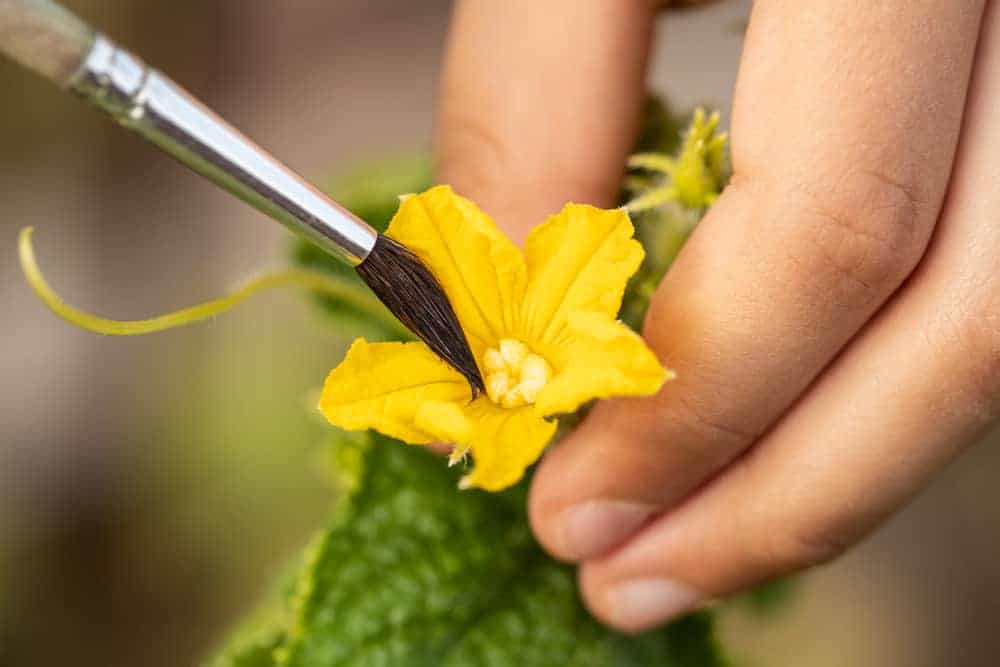
In most cases, honeybees and bumblebees will pollinate your cucumbers efficiently by transferring pollen from male to female flowers.
In some circumstances, when you plant too many different varieties of vegetables in your garden, pollinators can choose more attractive vegetables and avoid your cucumbers. Therefore, it will be necessary to pollinate those plants by hand.
Keep in mind that early blooms are almost always male. By hand-pollinating eleven days after blooms begin, you will encourage the more abundant production of female flowers.
How to Care Cucumbers
Space
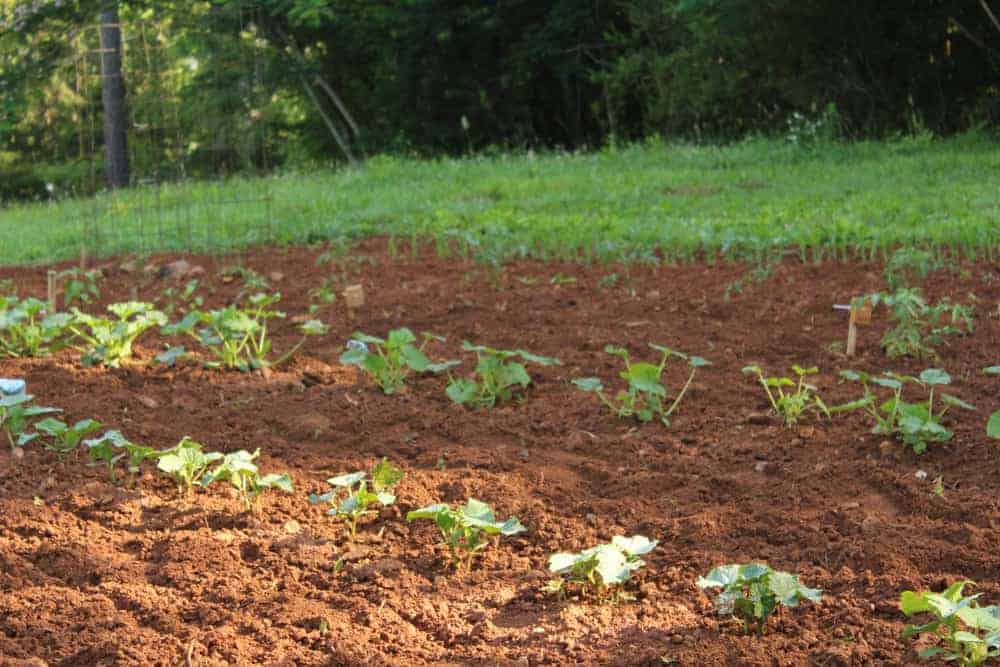
Sow enough seeds for 4 to 5 plants in every hill at a depth of 1 inch (2.5 cm). Space those mounds 3 to 5 feet (0.9 – 1.5 m) apart. Rows should be about 3 feet (91.5 cm) apart for bush varieties and 4 to 5 feet (1.2 – 1.5 m) apart for vining types.
Soil
Your cucumbers will thrive in fertile, loose, and well-drained soil with the pH 5.5 to 6.8. However, they can tolerate even alkaline ground with a pH of 7.6.
Light
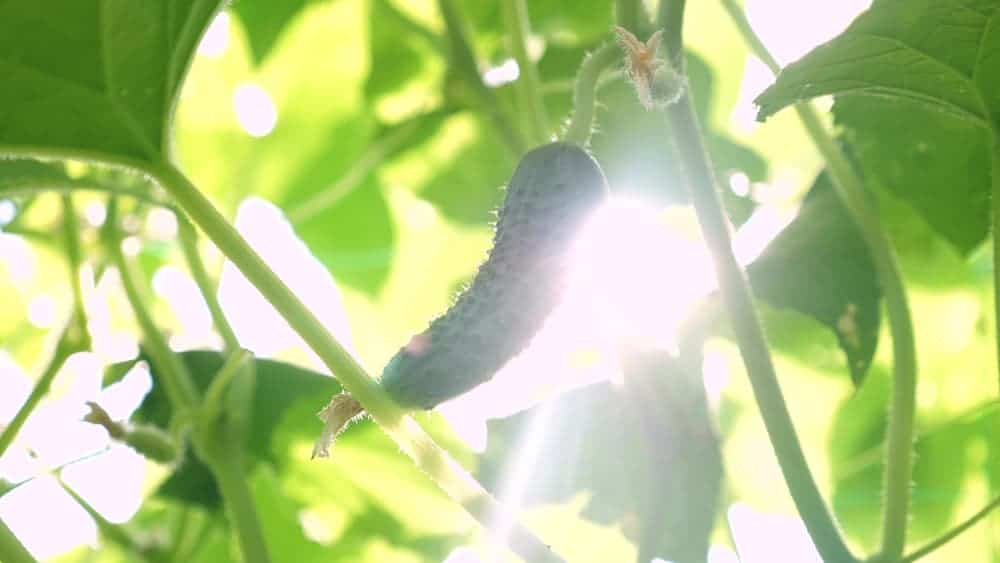
Your cucumbers need full sun, but they can tolerate partial shade as well. The best you can do is to provide 8 to 10 hours of full sun per day for them.
Temperatures
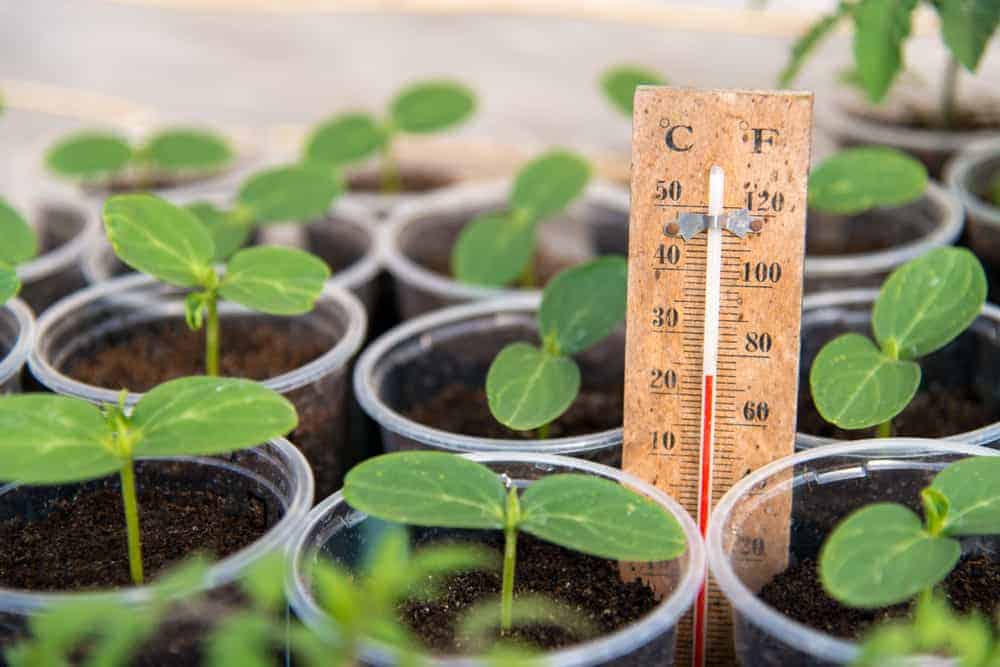
Since cucumbers are warm-season vegetables, you should plant them after the last frost, when the temperatures of the ground are at least 60 to 70 F (15.5 – 21 C). To start germinating, your veggies will need temperatures of approximately 68 F (20 C).
Watering
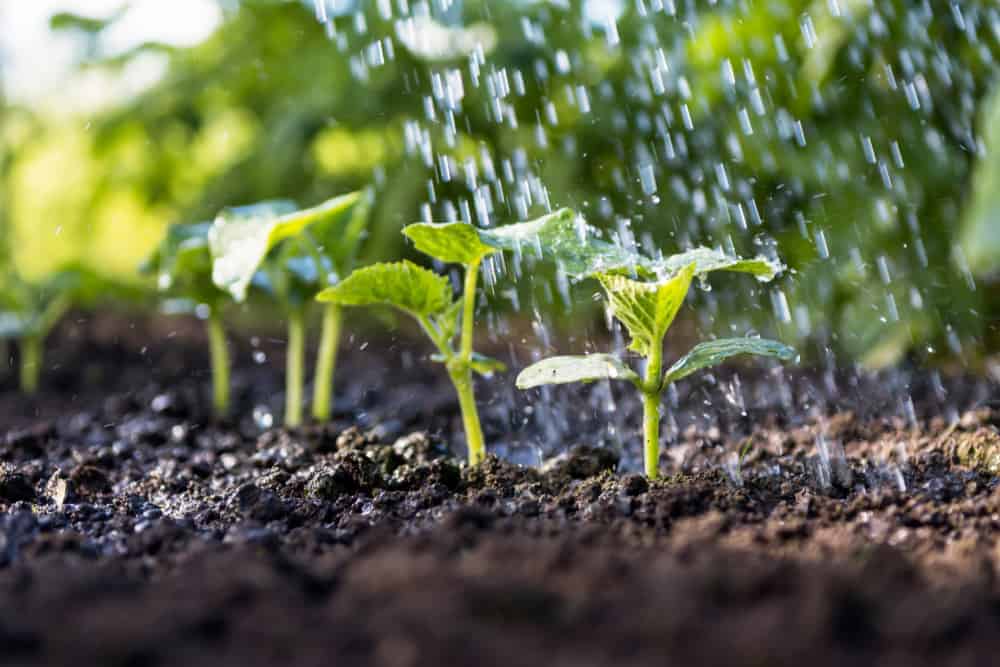
Since cucumbers are 95% water, they can’t stand dryness and require regular watering. Drip irrigation or soaker hoses are excellent solutions for those vegetables. They need at least 1 to 2 inches (2.5 – 5 cm) of water each week throughout summer.
Take care to water your plants in the morning or early afternoon at the base without wetting the foliage to avoid fungal diseases. If you notice wilted leaves early in the morning, water cucumbers right away. Also, keep in mind that inconsistently watered, your veggies may become bitter.
Fertilizing
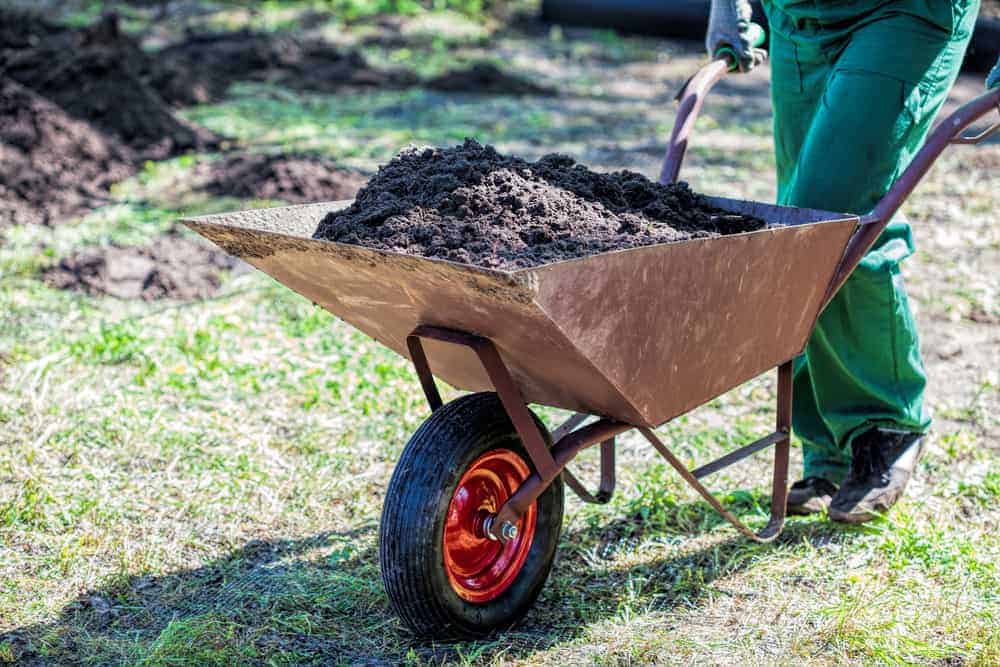
Before beginning planting your veggies, you should prepare the soil in advance by adding 2 to 3 inches (5 – 7.6 cm) of aged manure, mature compost, or commercial organic fertilizer in spring. After that, turn the soil to 12 inches (30.5 cm) deep and place plastic sheeting over it to warm the ground.
Keep feeding your plants regularly every two weeks throughout the season with compost tea or liquid organic fertilizer. It is essential for choosing the fertilizer low in nitrogen and high in phosphorus and potassium.
Mulching
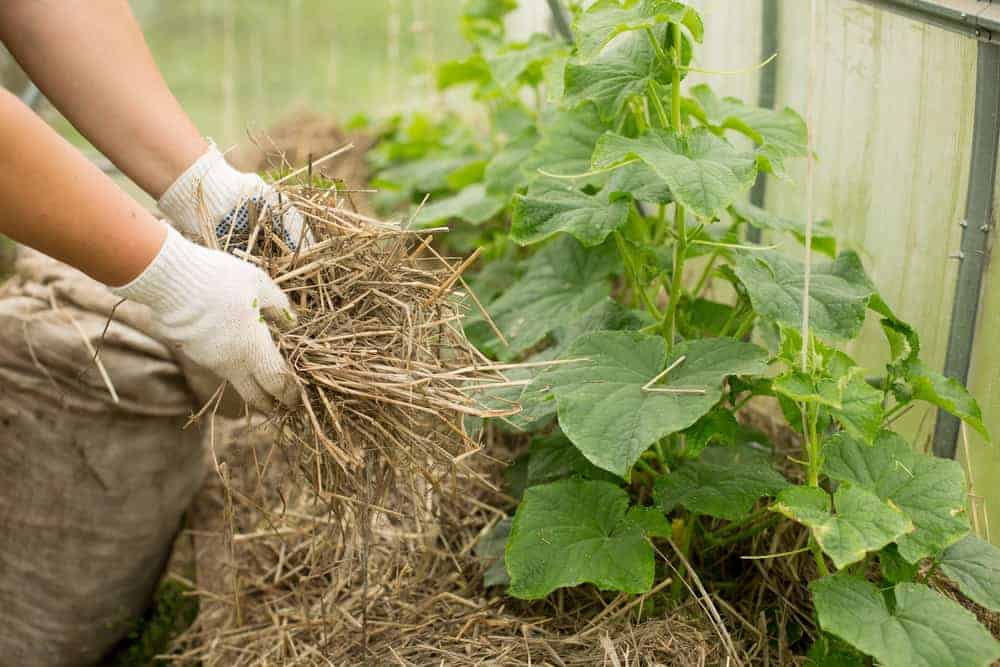
Mulching is essential for cucumbers when the temperatures are higher than 70 F (21 C). Covering the soil with chopped leaves or straw is a way to slow moisture evaporation from the ground, avoid its compaction after heavy watering, and keep it weed-free.
Thinning
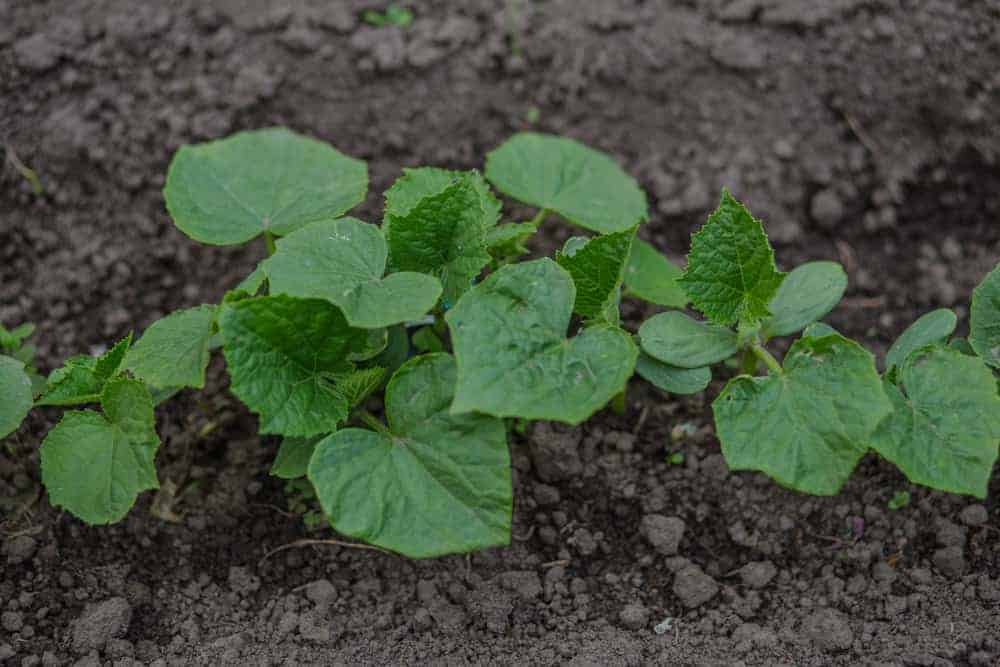
When seedlings become about 4 inches (10 cm) tall, it is the time for thinning. Try to provide at least 1.5 feet (46 cm) of space between them.
Support
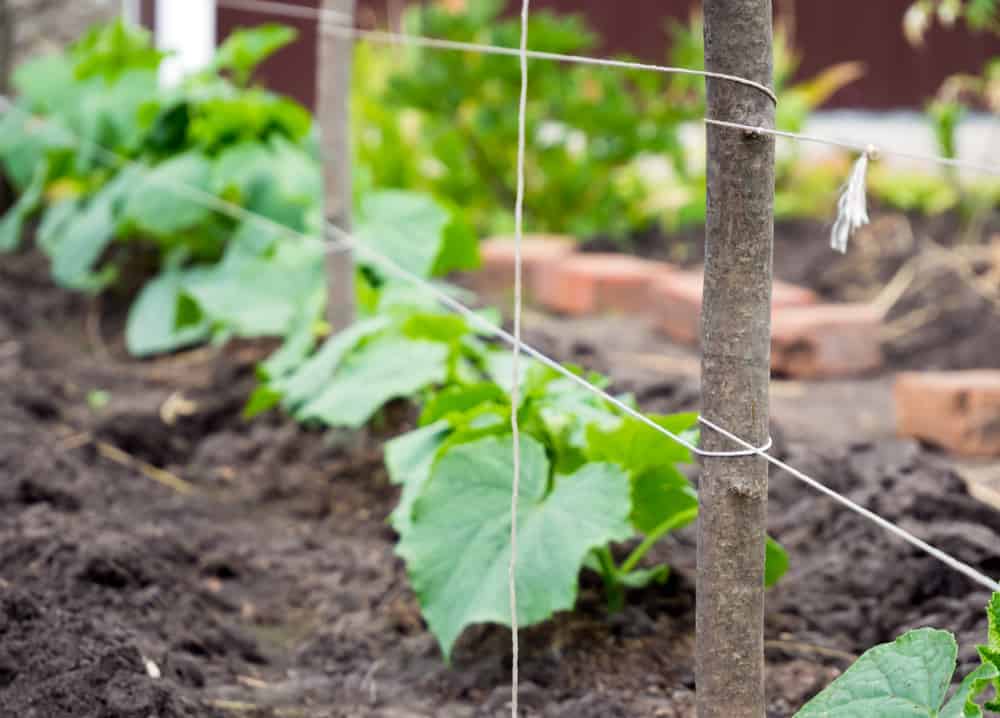
Your cucumbers usually need support. Set 4 to 6 feet tall (1.2 – 1.8 m) trellises to let your plants grow up. An ideal solution for vining cucumbers is a wire cage of 12 to 18 inches (30.5 – 46 cm) in diameter.
Also, you can create a mound at least 16 inches (40.5 cm) across and a few inches high. Provide space of at least 4 to 6 feet (1.2 – 1.8 m) between mounds.
Weeding
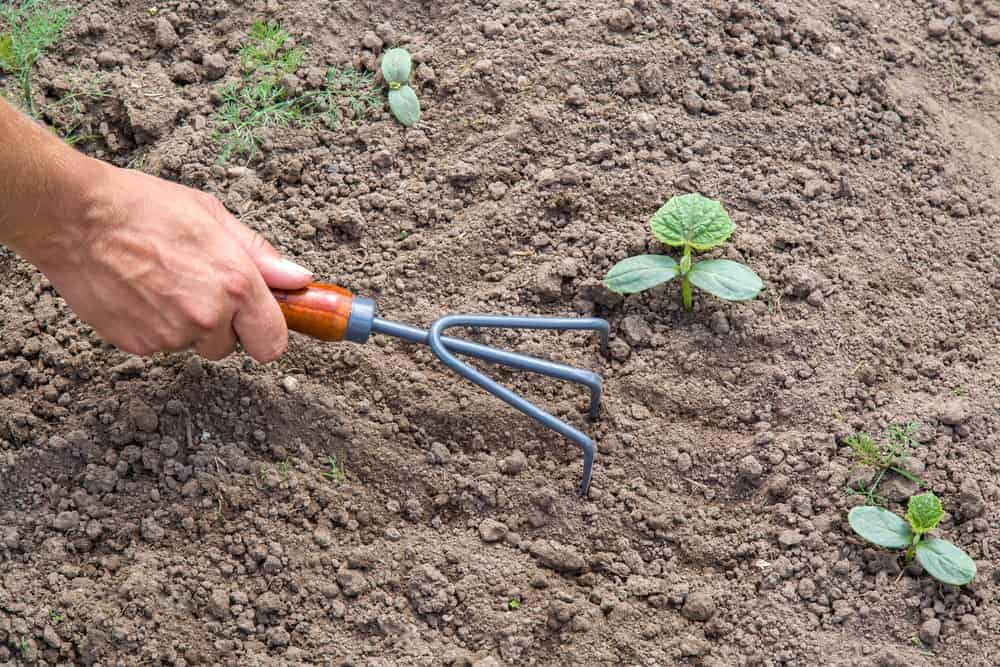
Keep your vegetables free of weeds to protect them from bacterial wilt disease. Also, take care not to disturb roots while hoeing.
How to Harvest Cucumbers
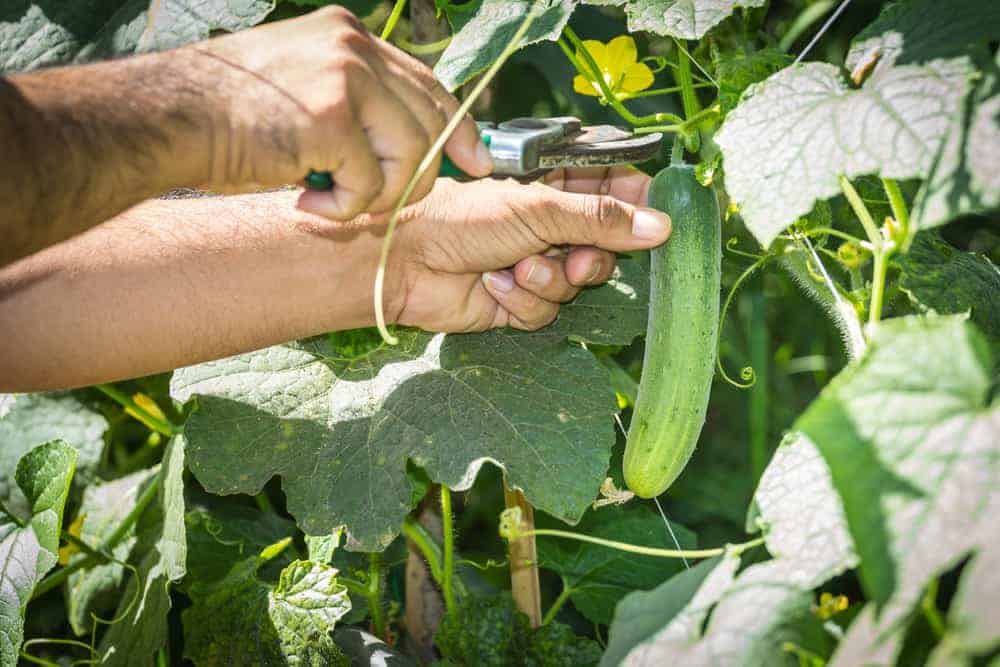
You can collect most varieties of slicing cucumbers approximately 55 to 65 days from sowing when they become 6 to 8 inches (15 – 20 cm) long.
When you decide to collect pickling cucumbers, you should do it every two days when they are long from 2 to 5 inches (5 – 13 cm).
If you have burpless cucumbers in your garden, you should collect them when they are about 10 inches (25 cm) long.
Cut mature fruits daily before becoming overripe, seedy, and lose their flavor. To avoid damaging of your plants, use a garden clipper or knife to cut your cucumbers from the stem.
How to Store Cucumbers
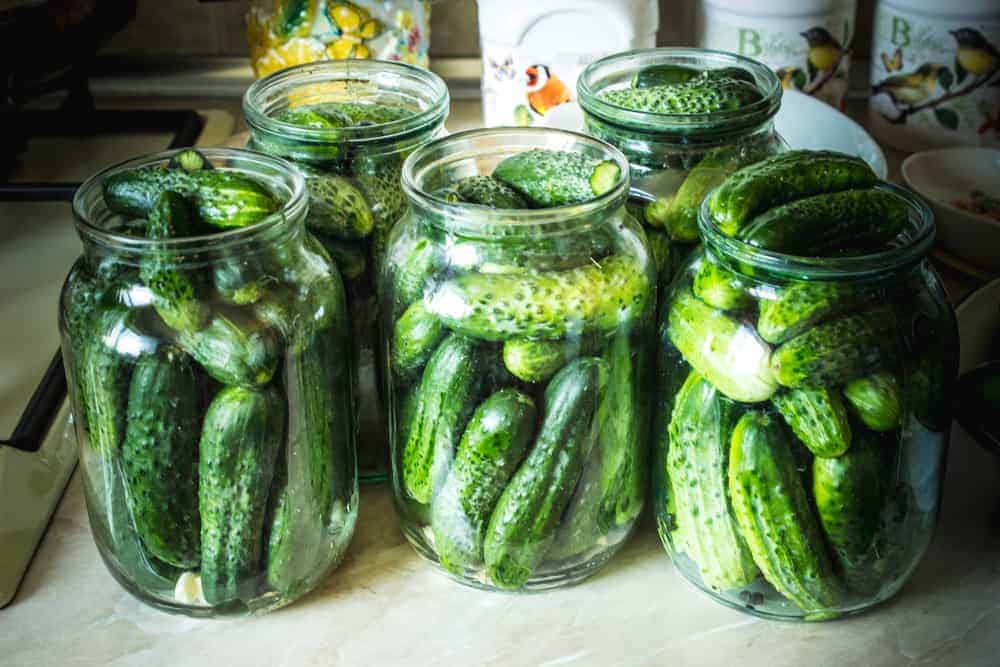
In average, you can keep collected slicing and pickling cucumbers for 7 to 10 days in the refrigerator in plastic wrap to prevent dehydration. However, if you want to get the best flavor, try to use them as soon as possible. You can store well-prepared pickled cucumbers up to a year.
Slicing cucumbers |
Pickling cucumbers |
Burpless cucumbers |
|||
|
Variety |
Harvesting time | Variety | Harvesting time | Variety | Harvesting time |
| Marketmore | 76 days | Edmondson | 70 days | Sweet Slice |
62 days |
|
Ashley |
66 days | Pik Rite | 63 days (gyn) | Perfection | 60 days |
| Poinsett | 65 days | Calypso | 56 days (gyn) | Green Knight |
60 days |
|
Sweet Slice |
62 days | Sumter | 56 days | Comet II | 60 days (gyn) |
| Comet II | 60 days (gyn) | Green Spear | 55 days (gyn) | Tasty Green |
55 days |
|
Spacemaster |
60 days | Salty | 53 days | Jazzer | 48 days |
| Ultra-Slice Early | 56 days | Spear It |
52 days (gyn) |
||
|
Speedway |
56 days (gyn) | Baby Bush | 51 day | ||
| General Lee | 55 days (gyn) | Cross Country |
51 day |
||
|
Tasty Green |
55 days | Conquest | 50 days (gyn) | ||
| Dasher II | 55 days |
|
|||
|
Supersett |
53 days | ||||
| Slice King |
49 days |
||||
|
Jazzer |
48 days | ||||
| Revenue |
48 days (gyn) |
||||
*gyn – Gynoecious which produce only female flowers
What to Do If Cucumbers Taste Bitter
Cucumbers contain cucurbitacins, compounds which cause fruits to taste bitter. You can expect the level of this compound to increase when your veggie is under stress.
Nowadays, there are bitter-free types of this vegetable with a particular gene which prevents forming cucurbitacins.
Cucumbers Pests and Diseases
Usually, cucumbers don’t have too many problems with diseases. However, I will list some issues you may deal with, especially if you don’t water your plants appropriately.
Blooming without fruits
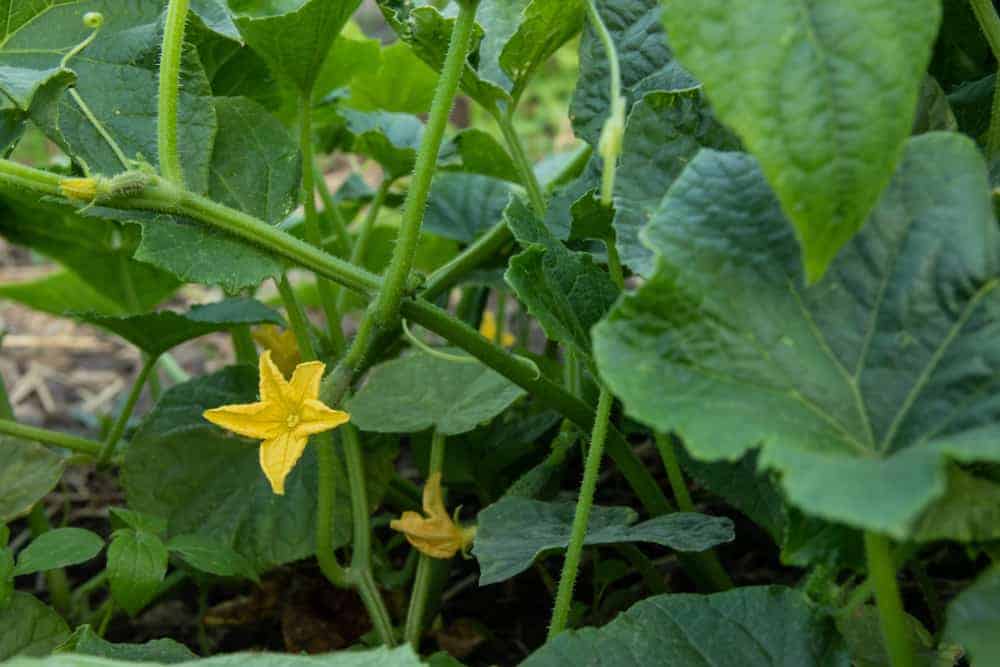
If your vine varieties bloom, but there are no fruits, your cucumbers probably haven’t pollinated well due to rain or low temperatures. Check for both male and female blooms and pollinate them by hand.
Cucumber mosaic virus
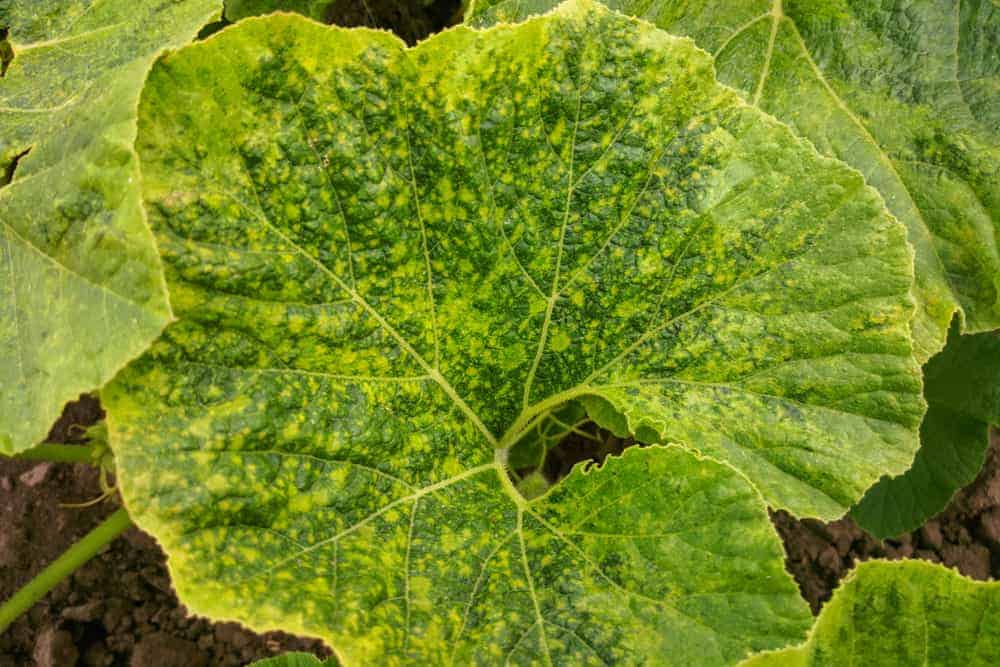
It causes stunting and deformation of leaves with recognizable mosaic patterning on them. As a result, you will notice reduced flowering. The only solution is to destroy infected plants.
Powdery mildew
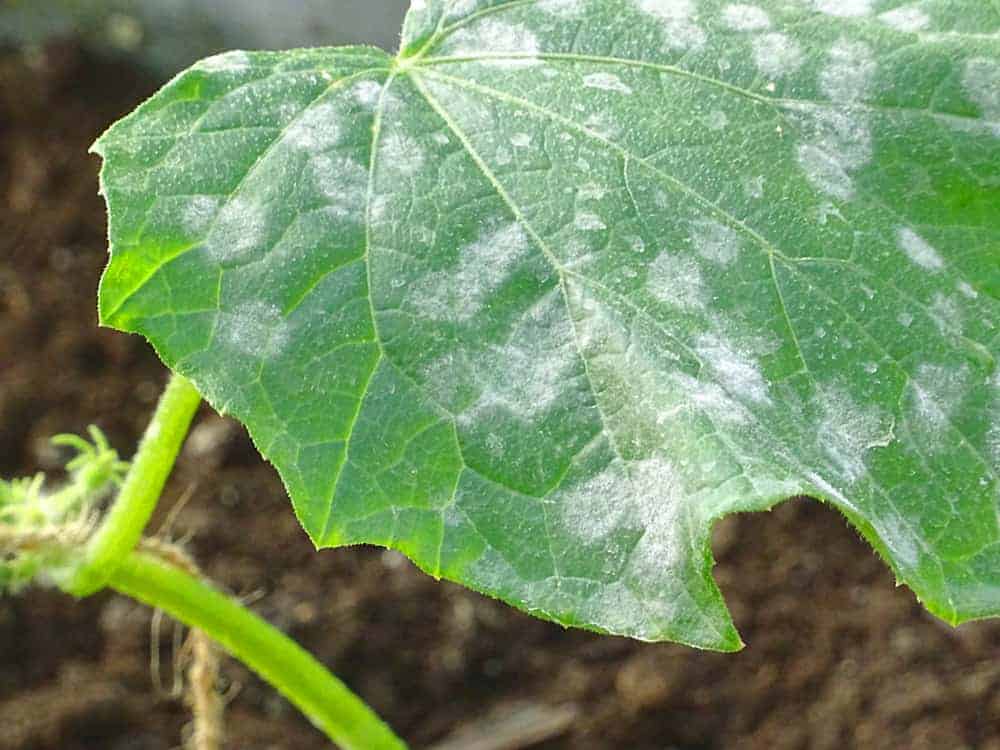
You can spot white powder sprinkled on the foliage during long, humid periods when your veggies are stressed. Prevent this disease by providing excellent airflow. Once it occurs, remove affected leaves and then spray plants with diluted baking soda and dish soap or cow’s milk.
Cucumber beetles
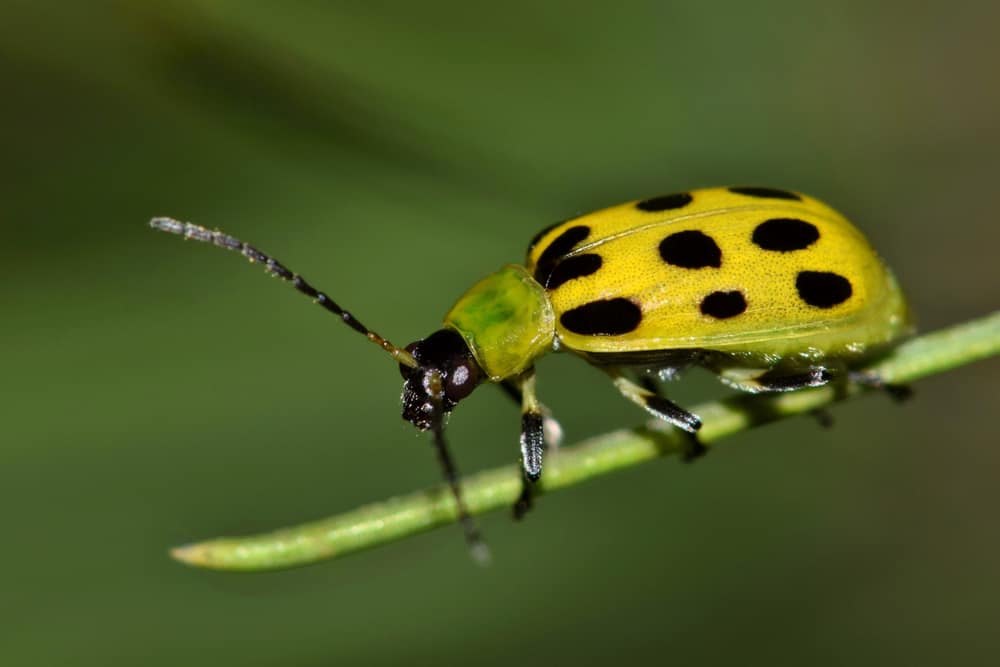
Those yellow and black bugs are probably the most common pests of those veggies. Get rid of them by spraying leaves with neem oil and destroying the eggs laid on the underside of foliage.
Squash bugs
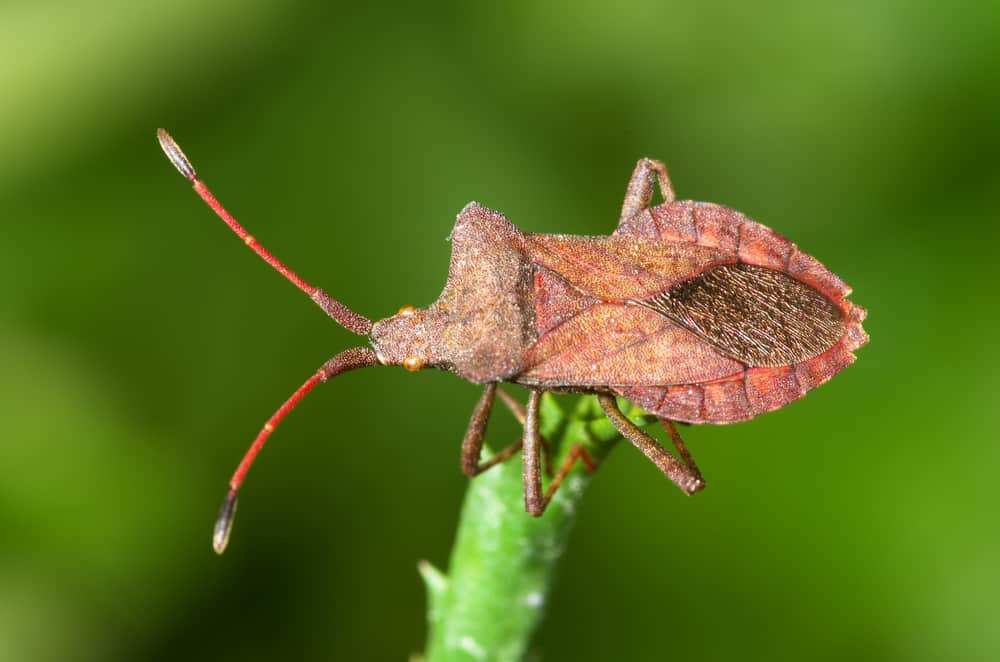
Those large, brown bugs are slow, and you can pick them off effortlessly. Prevent this disease by covering seedlings with garden fabric until they start flowering.
Slugs
They will chew leaves and make holes on them. Prevent that by spreading diatomaceous earth around your veggies.
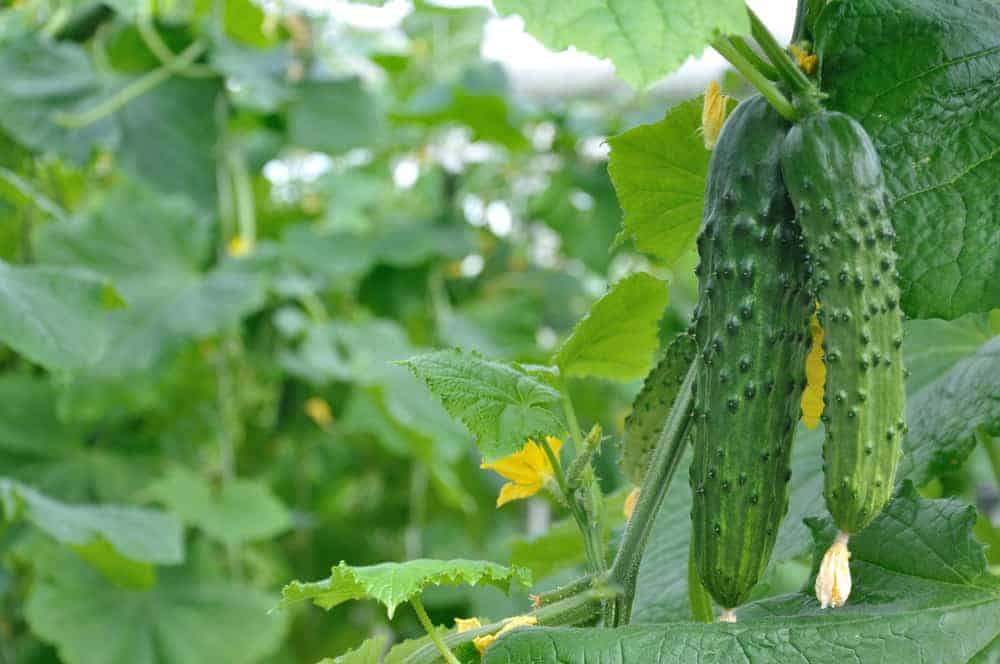
Leave a comment